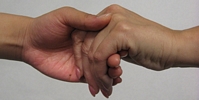|
|
 Acne (1,500) Acne (1,500)
 Addictions (1,500) Addictions (1,500)
 Advice (1,500) Advice (1,500)
 Allergies (1,092) Allergies (1,092)
 Alternative Medicine (1,500) Alternative Medicine (1,500)
 Anti Aging (1,500) Anti Aging (1,500)
 Breakup (1,500) Breakup (1,500)
 Cancer (1,499) Cancer (1,499)
 Dental Care (1,500) Dental Care (1,500)
 Disabilities (1,500) Disabilities (1,500)
 Divorce (1,500) Divorce (1,500)
 Elderly Care (1,498) Elderly Care (1,498)
 Goal Setting (1,500) Goal Setting (1,500)
 Hair Loss (1,500) Hair Loss (1,500)
 Health and Safety (1,497) Health and Safety (1,497)
 Hearing (1,500) Hearing (1,500)
 Law of Attraction (1,499) Law of Attraction (1,499)
 Marriage (1,500) Marriage (1,500)
 Medicine (1,497) Medicine (1,497)
 Meditation (1,499) Meditation (1,499)
 Men's Health (1,500) Men's Health (1,500)
 Mental Health (1,500) Mental Health (1,500)
 Motivational (1,500) Motivational (1,500)
 Nutrition (1,495) Nutrition (1,495)
 Personal Injury (1,499) Personal Injury (1,499)
 Plastic Surgeries (1,500) Plastic Surgeries (1,500)
 Pregnancy (1,496) Pregnancy (1,496)
 Psychology (1,500) Psychology (1,500)
 Public Speaking (1,500) Public Speaking (1,500)
 Quit Smoking (1,500) Quit Smoking (1,500)
 Religion (1,499) Religion (1,499)
 Self Help (1,500) Self Help (1,500)
 Skin Care (1,500) Skin Care (1,500)
 Sleep (1,500) Sleep (1,500)
 Stress Management (1,500) Stress Management (1,500)
 Teenagers (1,492) Teenagers (1,492)
 Time Management (1,500) Time Management (1,500)
 Weddings (1,500) Weddings (1,500)
 Wellness (1,500) Wellness (1,500)
 Women's Health (1,500) Women's Health (1,500)
 Women's Issues (1,500) Women's Issues (1,500)
|
1. Stress Inoculation Training (SIT)
The goal of stress inoculation training is to teach people to identify and anticipate stress-provoking situations, and defuse potential stress by rehearsing thoughts and actions to be implemented in actual stressful situations. This rehearsal of newly learned skills equips the individual to deal more effectively with a wide range of situations that have been potentially be stressful. SIT include, (1) Teaching clients the role of cognitions and emotions in stress and stress management. (2) Training them in fundamental problem-solving skills such as problem definition, anticipation of consequences and evaluation of feedback. (3) Providing instruction in and rehearsal of coping strategies such as relaxation, communication skills, social support building, attention focusing, and positive self-evaluation. (4) Gradually increasing behavioural assignments to strengthen newly acquired coping skills. The specific coping skills may include emotional self-regulation, self-soothing and acceptance, relaxation training, self-instructional training, cognitive restructuring, problem-solving, interpersonal communication skills training, attention diversion procedures, using social support systems and fostering meaning-related activities. (5) The final phase of application and follow through provides opportunities for the clients to apply the variety of coping skills across increasing levels of stressors.
2. Cognitive-Behavioral Therapy (CBT)
Cognitive therapy assumes that people can develop automatic erroneous thought patterns and beliefs of which they are unaware and that they consequently think and behave in ways that are irrational. Cognitive-behavioral therapy is a major component of stress management programs and of interventions for acute and chronic traumatic stress disorder. Many people who have a chronic illness or psychological problem see themselves as incapable of changing their situation. CBT directly challenges people to alter the way they think about themselves, the way they behave, and the way they deal with problems and their illnesses. Therapy and homework are designed to heighten the awareness of behaviors, feelings, and thoughts associated with specific stressors, situations, or conditions. Then, the person is encouraged to evaluate the pros and cons of his or her attitudes and beliefs regarding the stressor and to offer positive interpretations or cognitive reappraisals of situations with the intention of challenging the negative thought pattern. The person, therefore, learns to actively seek new ways of perceiving or appraising situations that are less damaging to their psychological and physical well-being.
3. Mindfulness-Based Therapies
The goals of mindfulness-based therapies are to teach people how to manage everyday stress and pain and take responsibility for their well-being. Mindfulness involves moment-by-moment awareness of what a person is experiencing, such as paying close attention to breathing, noises, sensations in the body, inner feelings and thoughts, and our reactions to specific situations. Mindful awareness involves meditation exercises and is often coupled with stretching to help attain a mindful state. The person observes the moment-by-moment sensations, cognitions, and emotions without judging whether they are bad or good, important or trivial, or sick or healthy (nonjudgmental observation). The person is encouraged to recognize and accept his or her limits and body, as opposed to pushing and pulling at his or her physical and psychological limits. The goal is for the person to experience a new relationship with the mental or physical condition instead of doing the same old catastrophizing, avoiding, or other maladaptive coping strategy. Mindfulness-based approaches have been applied to various physical and emotional problems and have received empirical support.
|
|
|



